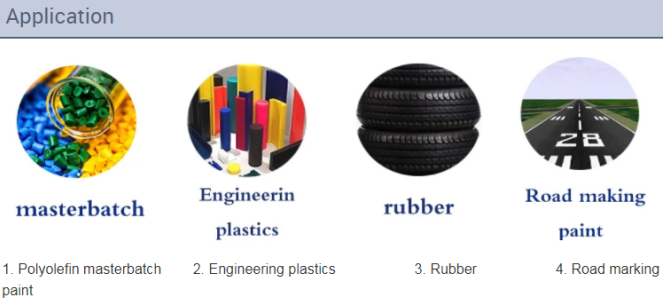
jul . 27, 2024 07:12 Back to list
Comparing the Characteristics and Applications of Rutile and Anatase Titanium Dioxide Variants
Rutile vs. Anatase A Comparative Analysis of Two Titanium Dioxide Phases
Titanium dioxide (TiO2) is one of the most widely used materials in various industries, including paint, plastics, cosmetics, and food, due to its excellent properties such as high refractive index, UV resistance, and photocatalytic activity. The two primary polymorphs of titanium dioxide are rutile and anatase, both of which exhibit unique characteristics that influence their applicability in industrial settings. This article aims to explore the differences between rutile and anatase, focusing on their properties, manufacturing processes, and uses in factories.
Properties of Rutile and Anatase
Rutile is the most stable and thermodynamically favored form of titanium dioxide at high temperatures. It has a tetragonal crystal structure and exhibits a higher refractive index than anatase, making it particularly desirable in applications where optical performance is crucial, such as in the production of high-quality pigments for paints and coatings. Rutile is also recognized for its durability and chemical resistance, contributing to its longevity in various applications.
On the other hand, anatase has a similar tetragonal structure but is less stable than rutile. The lower refractive index of anatase makes it less suitable for applications that require high optical clarity. However, anatase showcases superior photocatalytic properties, especially under UV light. This quality makes it an excellent candidate for environmental applications, such as in self-cleaning surfaces and air purification systems.
Manufacturing Processes
The production of rutile and anatase TiO2 can occur through various methods, each yielding different phases of the compound. The sulfate process and the chloride process are the two predominant methods of manufacturing titanium dioxide, resulting in either rutile or anatase, depending on the specific process parameters.
rutile vs anatase factories

The sulfate process typically produces anatase due to the conditions under which titaniferous minerals are treated with sulfuric acid. This method, while effective, can be relatively environmentally taxing due to waste generation. In contrast, the chloride process, which involves reacting titanium dioxide feedstock with chlorine at high temperatures, generally results in rutile production. The chloride process is often regarded as more environmentally friendly, generating fewer waste products and allowing for recycling of some materials.
Applications in Industry
The differences in properties between rutile and anatase lead to distinct applications in various industries. Rutile, with its high refractive index, is predominantly used in the manufacturing of pigments, particularly for exterior paints that require durability and strong, vibrant colors. Additionally, rutile titanium dioxide is favored in the plastic and rubber industries, where strength and stability are essential.
Anatase, while not as widely used as rutile, finds its niche in applications that leverage its photocatalytic activity. It is commonly used in sunscreens, where its ability to absorb UV radiation serves to protect the skin. Additionally, anatase is increasingly utilized in photocatalytic applications, such as wastewater treatment and air purification, due to its ability to break down organic compounds when exposed to UV light.
Conclusion
In summary, while rutile and anatase share the same chemical composition as titanium dioxide, their differing physical and chemical properties result in distinct applications across various industries. Rutile's stability and optical properties make it ideal for pigments and coatings, whereas anatase's photocatalytic efficiency lends itself to environmental applications. Understanding these differences is crucial for manufacturers and consumers alike when selecting the appropriate form of titanium dioxide for specific needs. As industries continue to innovate and prioritize sustainability, the demand for both phases of TiO2 is expected to grow, presenting opportunities for advancements in manufacturing and application methodologies.
-
Best Baso4 Price Wholesale & Manufacturer Deals in China
NewsApr.29,2025
-
Rutile Titanium Dioxide R698 Supplier Coating & Paint Solutions
NewsApr.29,2025
-
Premium Titanium Dioxide Ultra White Paint High-Coverage & Durable
NewsApr.29,2025
-
China Titanium & TiO2 Powder Factory Reliable Rutile & Lithopone Supplier
NewsApr.28,2025
-
Titanium Dioxide Types High-Purity Grades from Trusted Factories & Suppliers
NewsApr.28,2025
-
High-Quality Titanium Dioxide White Pigments Wholesale Supplier
NewsApr.28,2025
